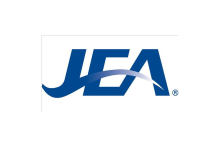Lighting Up the Dark (Fiber) in Jacksonville
Is a major metropolitan Fiber-to-the-Home (FTTH) network on the horizon for one of the Sunshine State’s most populous cities?
Longtime Jacksonville, Florida (pop. 890,000) resident Eric Geller is spearheading a citizen-led effort to rally residents and officials around a vision that would catapult Jacksonville into the fiber-connected frontier of Internet access and reinvigorate the economy of a city that was once known as the "Bold New City of the South."
As an IT consultant and former public policy research analyst, from Geller’s tech-savvy perspective the key is for the city’s utility company, JEA, to move beyond providing electricity, water, and sewer services and expand into building the necessary Internet infrastructure that would give all Jacksonville residents access to reliable and truly high-speed connectivity.
“Nationally, it’s been well accepted that we are at a point where the Internet is absolutely mandatory. Every business and home has to be connected,” Geller said in a recent interview with WJCT Radio, noting how the pandemic has made it clear that universal access to broadband is nearly as important as running water and electricity.
JEA’s Dark Fiber Infrastructure
If it’s a pipe dream, it’s one with light at the end — if Jacksonville residents can first see and appreciate all the dark. That is to say, the city’s existing dark fiber network, or the unused capacity of the fiber optic cables JEA has already deployed and how it could be leveraged and lit up to serve as the backbone for a citywide FTTH network.
JEA already leases routes to businesses along its 500-mile fiber optic network spanning the Jacksonville metropolitan area, which includes all of Duval Country and parts of St. Johns and Nassau Counties. In fact, with all that underground (and overhead) fiber already in place, Jacksonville can boast of having “more fiber in the ground than any city in Northeast Florida,” much of it passing through vital commercial and industrial parts of the city.



